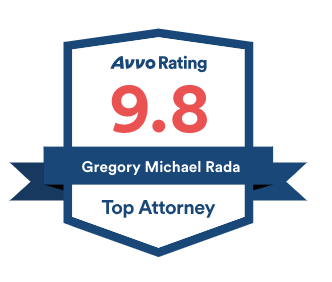How to Obtain Medical Evidence to Satisfy the Nexus Requirement
Posted by Gregory M. Rada | September 15, 2023 | Disability Compensation
Among the complex and multifaceted landscape of veterans’ benefits and claims for service-connected disability, one aspect is often misunderstood – the necessity and role of medical evidence. Many veterans may not realize that, in legal terms, they are not “qualified” or, duly qualified, to provide the medical evidence often needed to substantiate their claim.

Table of Contents
- Interpreting Competent Evidence
- What Counts as Competent Medical Evidence?
- What Counts as Competent Lay Evidence?
- How Lay Evidence Contributes to Service Connection Claims
- Conclusion
Interpreting Competent Evidence
To illustrate the importance of competent evidence, consider the CAVC ruling in Caluza v. Brown, stating that when a medical issue is at stake, competent medical evidence is mandatory. However, when the issue doesn’t require medical knowledge, lay testimony might be enough.
For example, I have occasionally seen the Board grant service connection for tinnitus based on a veteran’s lay testimony alone, even where the record contains an unfavorable VA nexus medical opinion.
What Counts as Competent Medical Evidence?
Competent medical evidence is defined in 38 C.F.R. § 3.159(a)(1) as evidence provided by an individual qualified through education, training, or experience to offer medical diagnoses, statements, or opinions. Such evidence could also include sound medical principles found in treatises, authoritative articles, scientific research reports, or analyses.
What Counts as Competent Lay Evidence?
As per 38 C.F.R. § 3.159(a)(2), competent lay evidence is any evidence provided by a person who can accurately recount facts or circumstances without the need for specialized education, training, or experience. It’s competent if it reports matters that a layperson can observe and describe.
How Lay Evidence Contributes to Service Connection Claims
Lay evidence plays a crucial role in proving service connection claims, as long as it fits the definition of competent evidence. The hurdle arises when claimants try to use lay evidence to prove something outside their expertise, such as the medical link between an in-service injury and a current disability.
A lack of contemporaneous medical records corroborating the lay evidence can weigh against the lay evidence. But the absence of medical records alone doesn’t negate the credibility of competent lay evidence. Just like medical evidence is almost always needed to show a current disability, it’s also almost always necessary to demonstrate a link between the disability and service.
Conclusion
The understanding of ‘competent’ medical and lay evidence is crucial for veterans pursuing claims for service-connected disability benefits. By appreciating the value of both types of evidence and their role in substantiating claims, veterans can better navigate the complexities of the claim process. Lay evidence can be extremely valuable, but the necessity of medical evidence in proving a link between disability and service must not be overlooked. Remember, it’s not about discrediting lay evidence but about using the right kind of evidence for the right purpose.
If you want to talk about your VA disability claim or appeal, call me at 800-955-8596 or schedule a free consultation.







